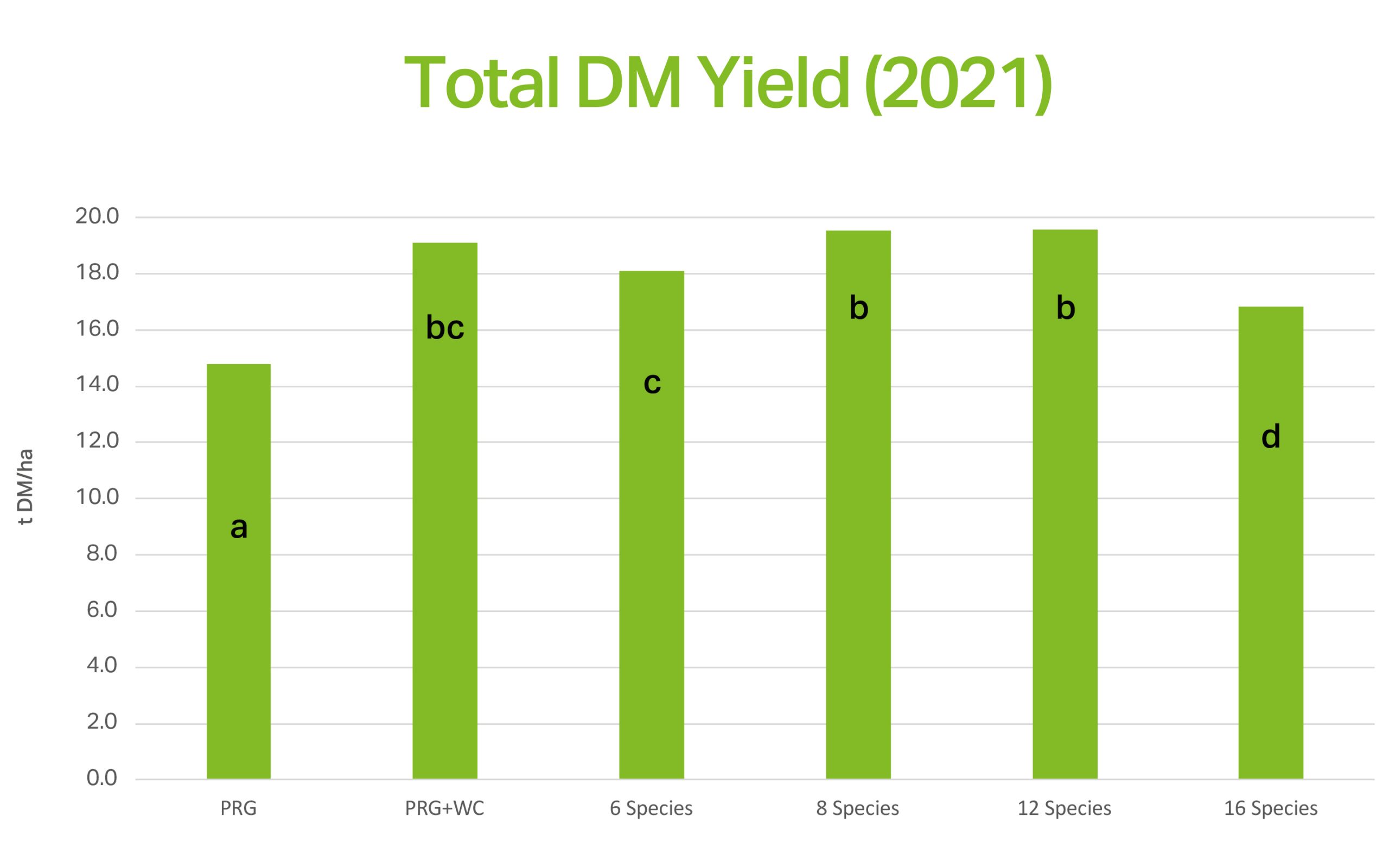Germinal Horizon is always looking ahead to solve the challenges facing Irish farmers. The team is investigating multi-species in a long-term trial on Germinal’s research farm. Initial results from the trials were presented during our webinar ‘Are multi-species swards right for your farm?’
One key finding, relevant to farmers reseeding now, is spring sowing yielded the best results and different mixtures impacted sward performance.
“Our trials found spring establishment is clearly better for multi-species – it benefits the herbs and legumes significantly,” says Dr Mary McEvoy, Germinal’s technical development manager. “Our research showed the herbs chicory and plantain dominated initially with the legume content increasing over time. All these species flourished improving sward performance. A strong legume component, such as red and white clover, is critical for nitrogen fixation.
“If you’re going to take the plunge with multi-species swards, this spring couldn’t be a better time,” says Dr McEvoy. “Sow into warm spring soil (around 12 degrees) and aim for fertile soils with a pH 6.3-6.5 and P and K index 3.”
Multi-species swards' effects on yield
Germinal Horizon researchers compared the performance of six different mixes, ranging from pure perennial ryegrass to a 16 species mixture. Over a two-year period, they reviewed yield, dry matter (DM), metabolic energy (ME), protein and overall seasonal performance.

Source: Germinal Horizon
Production was good in all trial plots, showing good DM yields. The perennial ryegrass yielded 14.8t DM/ha compared to the multi-species seed mixtures, except the most diverse mix, producing around 19t DM/ha. Dr McEvoy explains, “We saw yield drop off in the plots of the 16 species mixture. So, for high-performance grazing, the other mixtures performed better, but the most varied sward may have a role if you are concentrating on biodiversity.”

Source: Germinal Horizon
It’s a similar story with performance across the season. The perennial ryegrass was initially strong but tailed off as the summer progressed, as did the 16 species mix, which finished the year with the lowest performance levels.
Adding species to the ryegrass produced a clear benefit to yield. Both the perennial ryegrass with white clover and the six species mix delivered a better supply curve with the most consistent performance.
The six species mix is very similar to the mix recommended by the Department of Agriculture, Food and the Marine as part of their multi-species sward measure.
Dr McEvoy explains: “There is a prevailing attitude of ‘just give it a go and see’ with multi-species. At Germinal Horizon we have deliberately applied science to answer these questions and give farmers confidence when sowing multi-species swards. We are establishing ‘best practice’ for farmers on establishment, grazing and management of multi-species.”
To help farmers deal with the many production demands they face, Germinal is committed to driving forward innovation, focused on productive, profitable and climate-smart forage solutions. Visit our Germinal Knowledge Hub for further webinars and expert advice on grassland management.
Guide: How to grow multi-species swards
